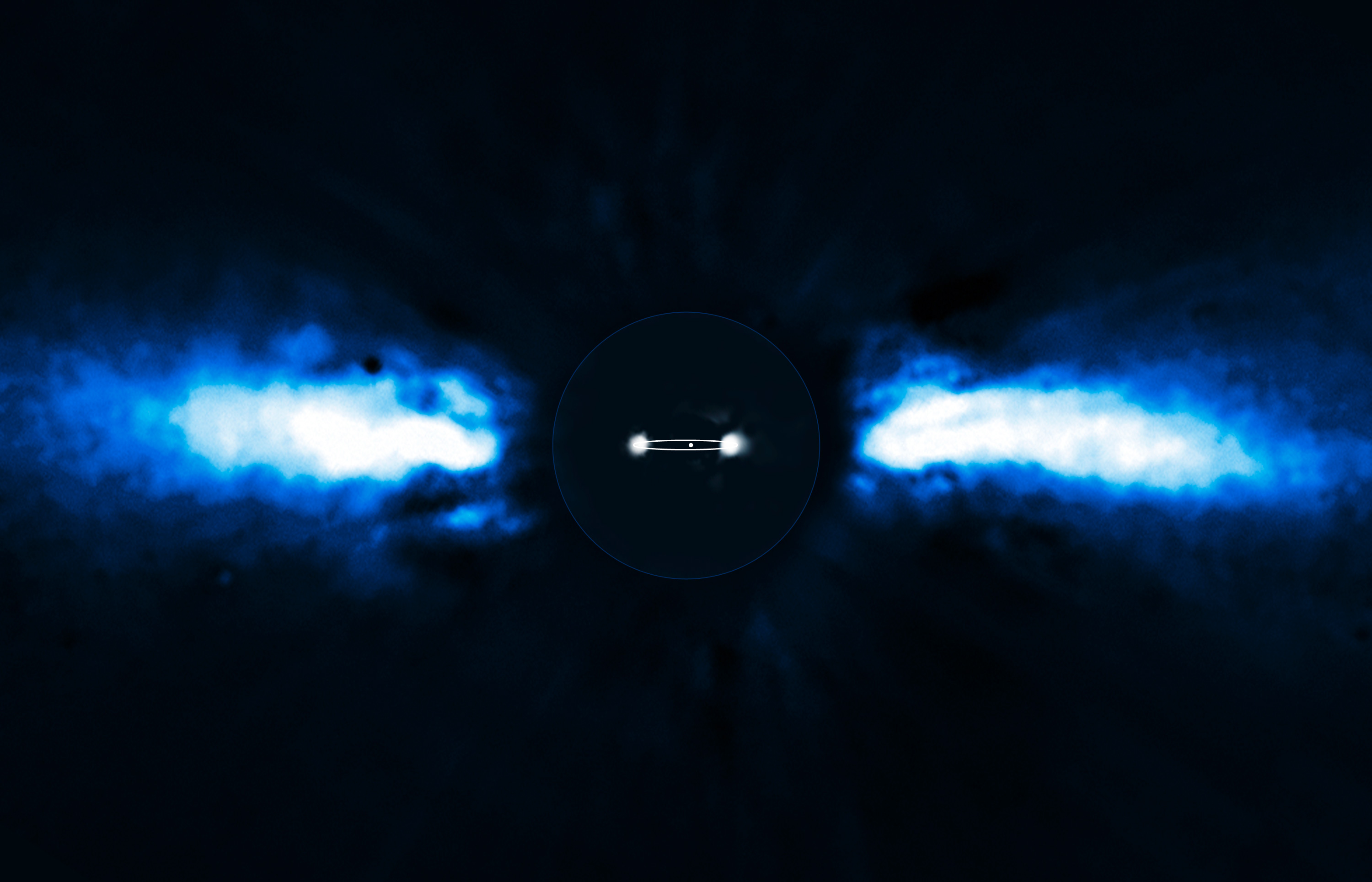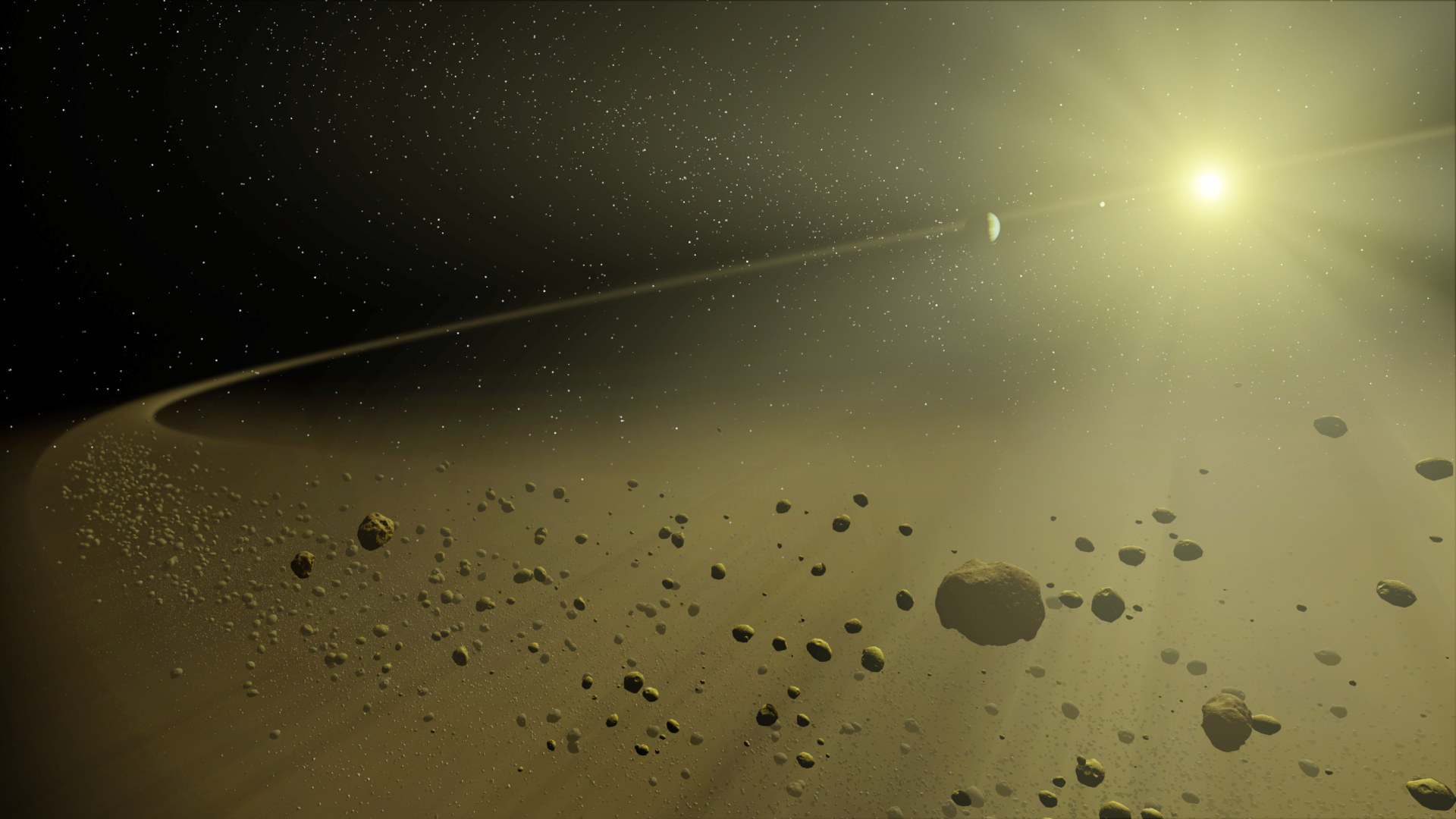This summer will be the first time that we’ll be able to observe the Hill sphere of a directly imaged exoplanet as it passes in front of its host star! The exoplanet, Beta Pictoris b, is a young (~20 million years old) planet orbiting the star beta Pictoris. Here is an image showing the planet photographed in 2003 and then later in 2009:

As chance would have it, we see the orbit of beta Pic b (the exoplanet) nearly edge-on from Earth. This means that as beta Pic b moves along its orbit it will come very close to transiting the host star. Although the planet itself won’t pass exactly in front of it’s host star, the Hill sphere of beta Pic b will.
During this event, any material in the Hill sphere (e.g. left-over debris from planet formation, rings, gas torus around satellites, etc.) could be detectable. This summer, my colleagues and I will monitor this transit event using the Hubble Space Telescope in the far-UV.
An astronomical body’s Hill sphere is the region in which it dominates the attraction of satellites. To be retained by a planet, a moon must have an orbit that lies within the planet’s Hill sphere. The moon for example, orbits inside Earth’s Hill Sphere (more info).
Exocomets are small icy bodies which vaporise on close approach to their star, leaving behind a tail of dust and gas, much like comets in our own Solar System.
They are thought to be common in young or debris-rich systems with large planets which are in the processes of forming. To date, only a handful of stars harbouring exocomets have been detected.
Our aims:
Directly detect the composition of the gas in the Hill sphere
The proposed Hubble Space Telescope observations will provide us with column density measurements of key species such as Hydrogen, Carbon, Oxygen, Nitrogen and Silicon which are only possible via far-UV observations and will not be possible to detect with any other telescope other than the Hubble Space Telescope .
This gas could originate from gas escaping the planet, or by geophysical activity originating from young orbiting satellites similar to the Io-torus observed around Jupiter. Measurements of the column density and abundance ratios will constrain the physical process at work within the nearby environment of a young planet.
Track the compositional variations as a function of Hill sphere radius
By measuring the beta Pic b Hill sphere composition at different distances from the central star we are able to measure compositional variations as a function of distance away from the planet beta Pic b.
Variations in the shape and strength of the absorption and emission features before and during the passage of the Hill sphere of the planet are key to studying the geometry of the gas and dust content of the circumplanetary environment.
Monitor temporal variations in the circumstellar dust and gas disk
The proposed multi epoch observations combined with our previous Hubble Space Telescope observations will allow us to measure compositional changes of the dust and gas in the debris disk.
By studying the change in the slope of the observed continuum emission from the star we will probe how much dust is present in the Hill sphere and in the dust flows between the Lagrange Point and the planet.
Determine the composition of exocomets present in the beta Pic system
Exocomets imprint time-variable absorption signatures on the stellar spectrum as they transit beta Pictoris will allow us to probe the composition of exocomets.
Previous Hubble Space Telescope observations has so far already provided us with a few exocomet detections in the far-UV, with the unprecedented detections of key species like carbon and oxygen. The upcoming observations will be a significant addition to the data obtained.

The Hill sphere transit in the reference frame of beta Pic b. The planet is located at the origin marked by the cross. The Hill sphere and half Hill sphere are denoted by the light orange and dark orange shaded circles respectively. The path of the star through the Hill sphere for one possible orbit is plotted as the gray line. The lines are shaded with teal, blue, and purple to denote three observing windows when beta Pic is visible. The dates indicate the start and end of each observing window. Adapted from Wang et al. (2016).
Feature Image: T. Pyle (SSC), JPL-Caltech, NASA.







Hi there – Only somewhat related…Just wanted to know what happened to your excellent page: “How to Decide which Exoplanets to Observe”. I’m President of a group in southern Vermont (www.sovera.org) which includes members with more advanced skills. The discussion of exoplanet transit light curve work is getting pretty bubbly. When I went to show off this cool web site that walks one through a process of helping confirm candidate transits…poof! The ol’ “404” message. Have you moved it, or is it lost in the ether? Thanks much! – C.
Hi Claudio.
I did remove it a while back when I did a bit of website cleanup. However, since you were so fond of the post I have now put it back. You can find the post by searching “How to Decide” in the search field. Thanks for your comment!